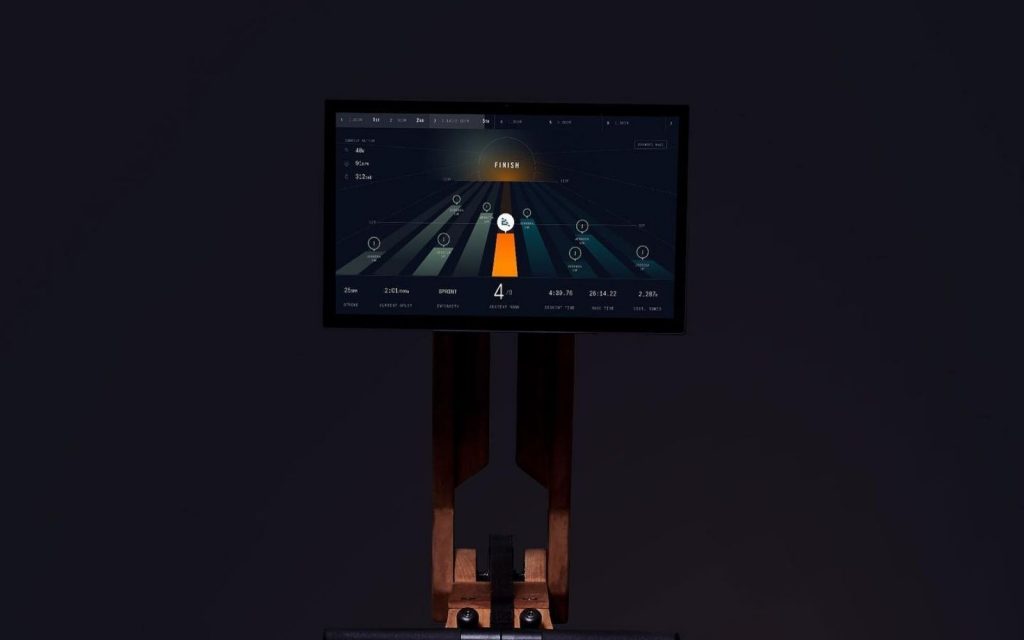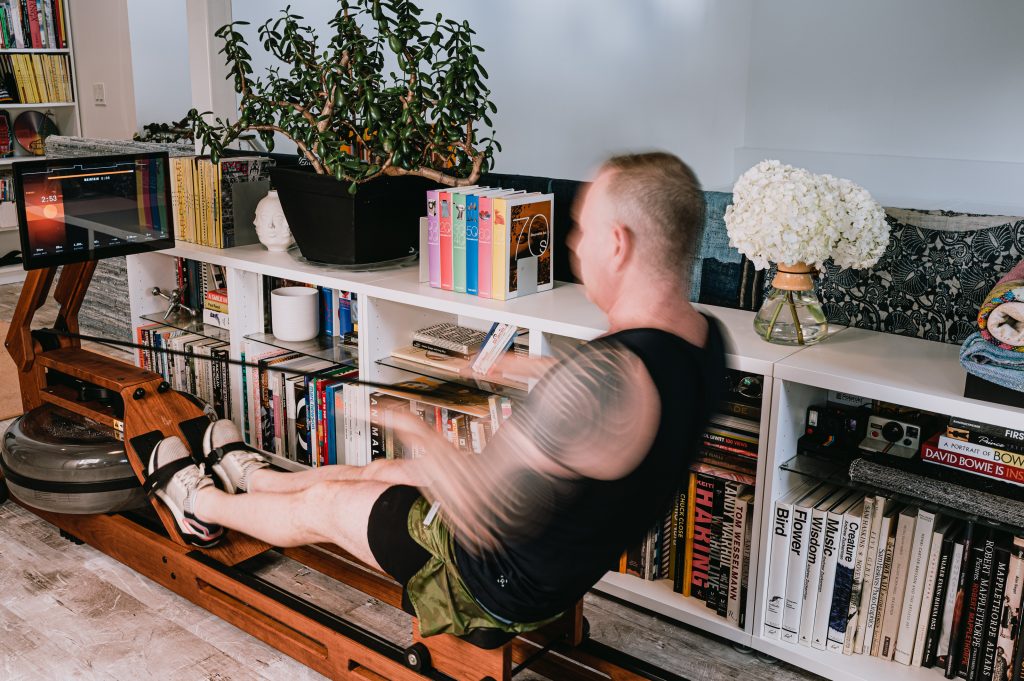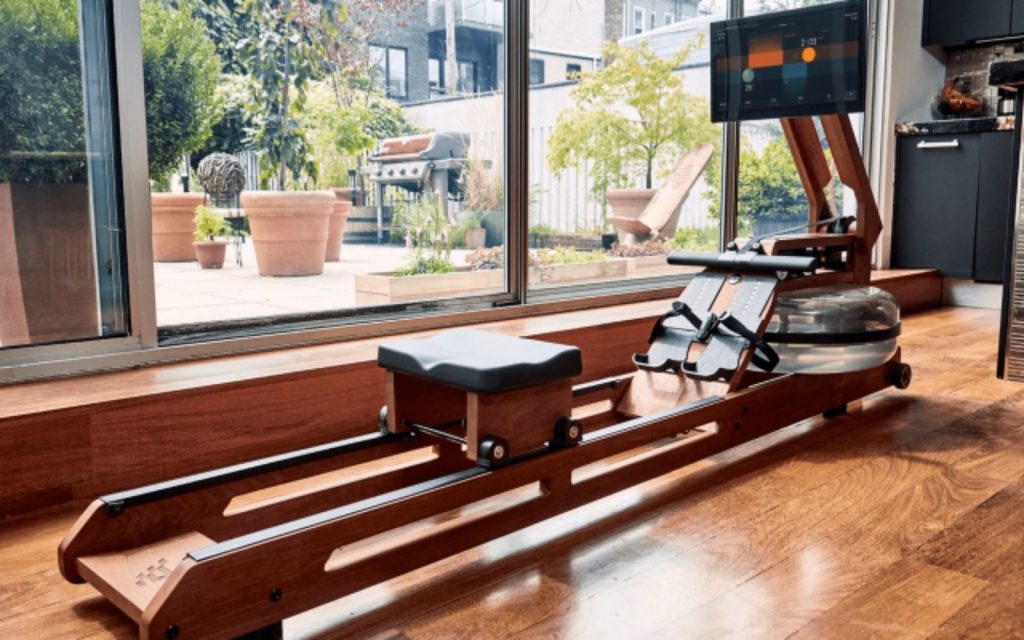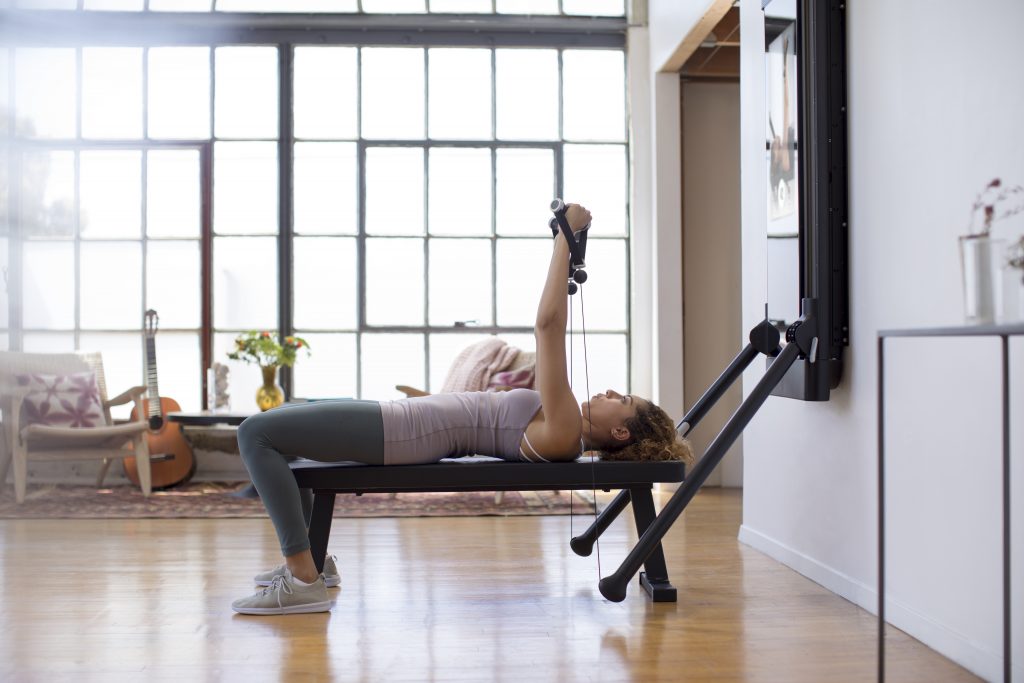Ergatta’s Connected Rowing Machine Gamifies Fitness
An at-home workout system programmed with games that tap into your competitive spirit

The equipment we use to exercise will always emphasize function first and foremost. Designers tasked with defining forthcoming machines’ aesthetics contend with trainers and therapists regarding how to best integrate a design style without interfering with range of motion or desired results. There’s also the challenge of square footage—ways to make room for other machines or to hide equipment in spaces sometimes dedicated to other tasks. With Ergatta, a gaming-inspired connected rowing machine, consumers are introduced to cardio equipment designed with their home (and those in it) in mind.

From the machine’s made-in-America construction to its intelligent, elegant on-screen display and animations, The Rower is a definite departure from the run-of-the-mill machines found in apartment building gyms and even elevated, members-only fitness institutions. Plus, your regiments get gamified, meaning workouts whirl by under the guise of a video game.

Ergatta began with “an extensive amount of research that Alessandra (Gotbaum) and the other two co-founders, Tom (Aulet) and Prasanna (Swaminathan) had done. It was a lot of market research—understanding what this potentiality looked like, for this kind of product—which largely shaped the initial product requirements of where we started,” Jordan Morris, Ergatta’s lead product designer, explains.

“The big insight was that consumers didn’t want an instructor-led class experience,” Gotbaum says, “but they did want the structure that was provided in that experience—one that was more self-directed and one that was rooted in competition. We started by taking the basic tenets of a structured workout and then started a design process to figure out how we deliver the format of a structured workout through a more creative, design-forward way where you still have to do things for a certain amount of time, but we enhance that experience through competitive elements.”

Gotbaum, Aulet and Swaminathan steered an effort to understand why a certain subset of exercisers didn’t enjoy classes led by an instructor or by a team of “cheerleaders.” Gotbaum explains, “It’s largely emotional. They didn’t feel a connection with their instructor. They didn’t want to be told what to do. They wanted to be in charge of their own fitness destiny and motivate themselves through the experience.”

Others simply responded better to “being given a target that you could autonomously interpret, and then do something with that,” Morris adds. “It’s like you were doing any kind of strength training program or a cardio program independently in the gym, you could still set your own target; those are still established targets; you feel in charge of hitting those targets instead of someone having to stand behind you and say, ‘You can do it! Here we go!’ Removing that element, but retaining the idea of structure, opens up this whole other world of possibilities, which informs how we get into the idea of gamification and video game influence, which is largely the same kind of idea: there are constraints and there are instructions and rules to what you’re supposed to do, but it’s essentially being given to you by the game that you’re playing.”

Ergatta intends to distance the user from the difficulty of the given workout—not numb them to the point of overexertion, but ease them into routines they would’ve otherwise avoided. The quiet swish of the water flywheel is more pleasant on the ears than the whirl of a fan- or belt-based one. Bluetooth connectability tethers the machine to your home entertainment system. The 17.3-inch HD touchscreen makes the experience more immersive. Its upright footprint measures 23 by 22.5 inches (about the size of a barstool), making it easier to store and maneuver through tight spaces. Once you’ve brought it down, though, and tapped into the system’s suite of gaming-inspired sets, you’re unlikely to want to hide it away for too long.

The company’s newest game, Meteor, falls under the machine’s Interval Workouts tab. “Inspired by classic 2D side-scrolling games,” its description reads, “this experience challenges users to collect tokens as they fly through space at different target speeds.” Pulse, another game under the aforementioned tab, allows you to set personalized targets, with a win achieved when you reach 100%. Under the machine’s other tabs—Push Programs, Race Workouts and Open Row—you can test your own programs, toy with difficulty settings, take it easy until you’ve mastered the method, race other community members or your own previous records in head-to-head races or set a distance and slowly row in an unstructured way.

“When we set out to create Meteor, our ambition was to introduce a differentiated structured workout that truly emphasizes the ‘game’ in the experience as much as the workout. This design-forward experience is the product of many months of animation work from top designers and features an emboldened design palette fitted with dynamic animations and vibrant visuals,” Gotbaum tells us. “While beautiful, Meteor is here to test your limits, bringing personalized HIIT and endurance workouts to your home and providing incentives to push yourself past the margin.”

Mastery of these games (Meteor in particular) doesn’t come without a basic understanding of rowing, however. Ergatta relies on verbiage used within rowing—splits, SPM, etc—but the designers have taken on the role of educator. Establishing a basic understanding of the sport is a way of “getting over that barrier to entry,” Morris explains. Then, the gaming-inspired system keeps the user interested.

“A lot of what we want to do with gamification is to make it so that the rolling aspect of it feels organic and natural. In order for that to happen, there has to be some kind of learning—of how SPM works, how splits work. Once you understand them, and how they work in accordance with one another, that will let you be a little more informally focused, if that makes sense.
“We’ve all been in the zone, right?” Morris asks. “Finding that flow state is a really key aspect of what we want to do… We want to push the idea of an emotional connection to the experience. Reengagement is obviously a key aspect of what we want for our product. We want people to keep revisiting it, because not only is it a good workout, it’s actually just a joy to experience.”
Hero image by Josh Rubin












